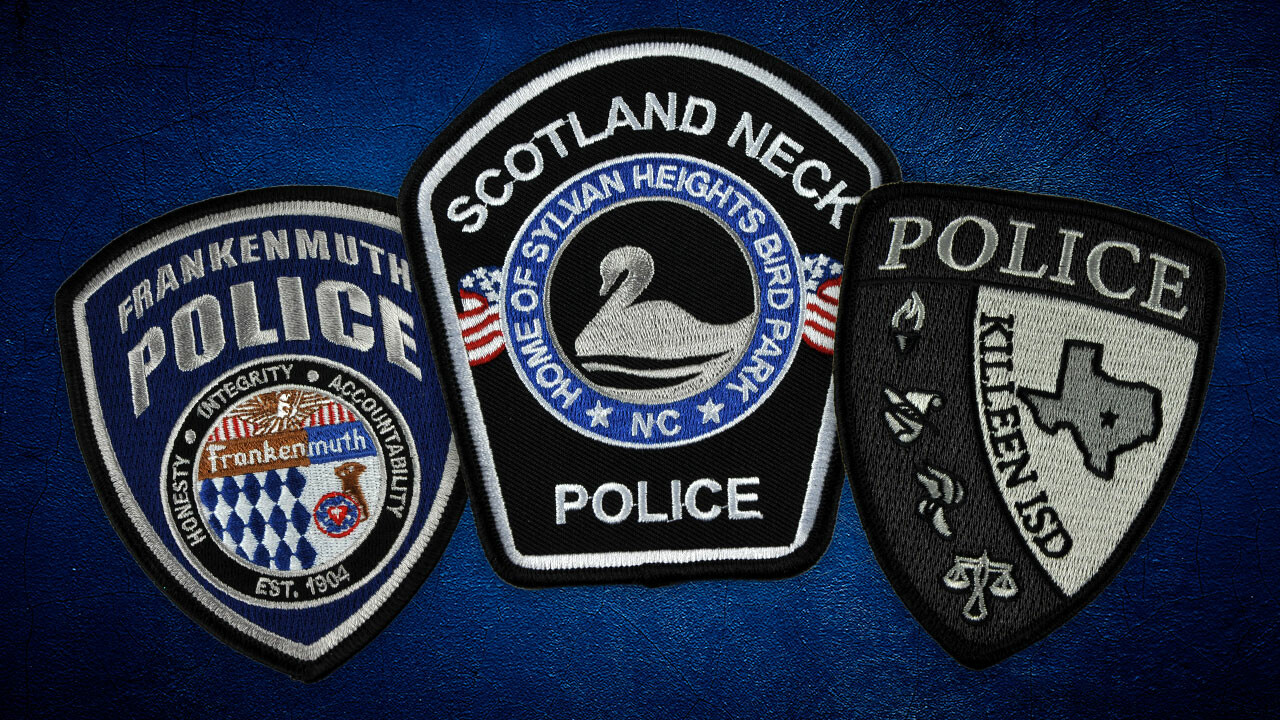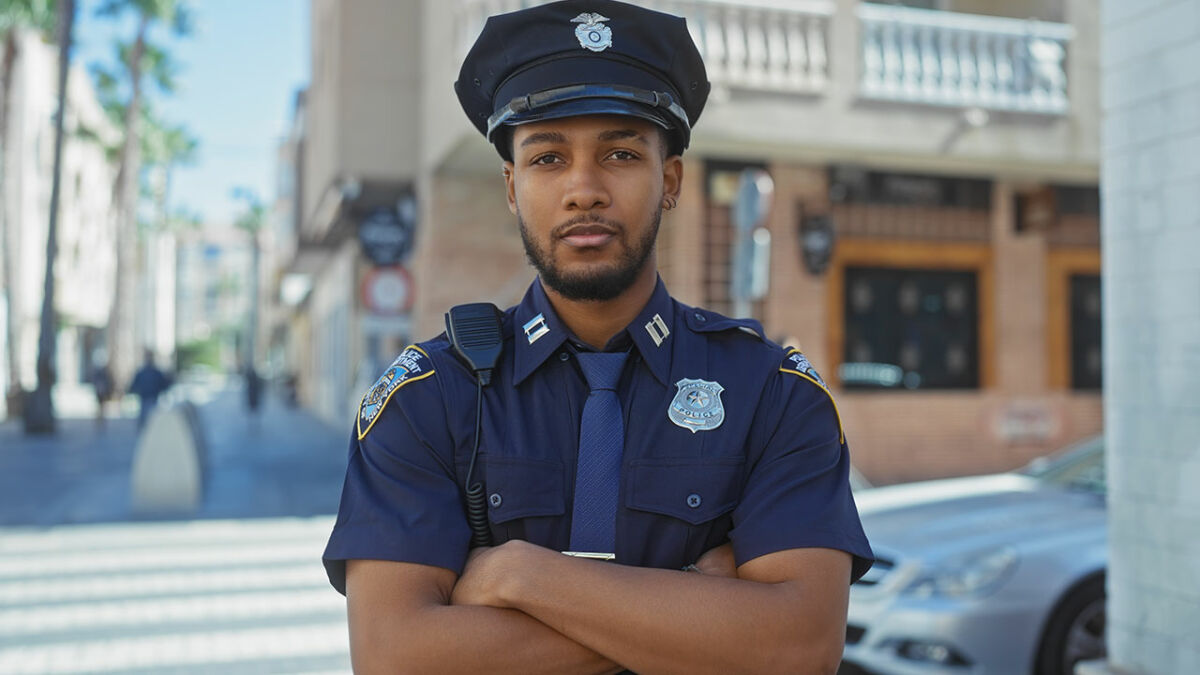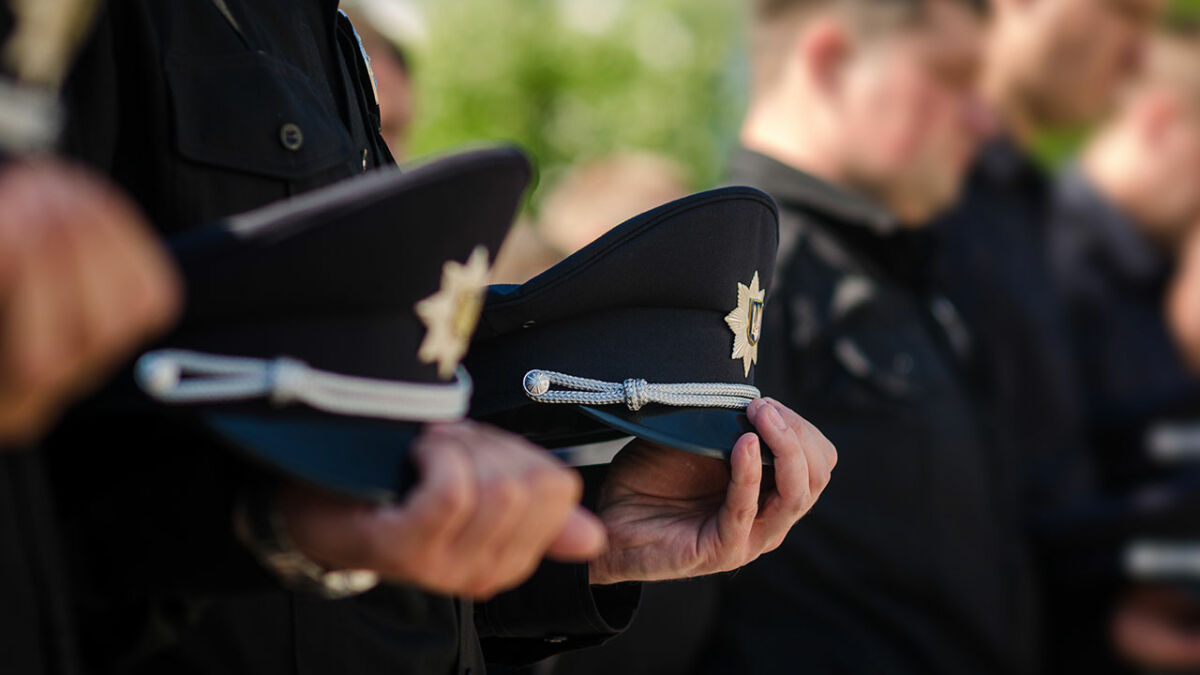
Honor Loyalty & Dedication With Custom Police Patches
Custom police patches are a longstanding element of police uniforms. They can convey information, honor achievement, commemorate fallen officers and much more.
Police patches hold a unique place in law enforcement culture. Their history, design, and significance give these patches meaning beyond mere decoration, to embody the values, responsibilities, and traditions of law enforcement agencies.
The history of police patches shows how they honor dedication and loyalty of dedicated public servants. Let’s take a look at the origins of custom police patches and what they mean to police officers today.
The Beginnings of Police Patches
The tradition of police patches dates back to the 19th century. Early law enforcement officers wore simple uniforms, often with just badges or insignias. As departments grew, patches became a practical addition, offering a visible, durable way to identify members.
Departments started to design patches that represented their unique jurisdictions, featuring local landmarks, symbols, and mottos. These designs reflected the growing sense of identity within individual police departments.
The Role of Police Patches

Police patches serve several important functions. Their most basic one is to identify officers as members of a specific department. This helps build trust in the community by enabling residents to quickly recognize law enforcement personnel when needed.
Patches also help create unity within a police department. When officers wear the same patch, it helps create a sense of belonging and camaraderie. That reinforces their dedication to the shared mission of serving and protecting the community.
Many departments also use custom patches to identify specialized units within their department. For example, SWAT teams, bomb disposal units and K-9 units might have police patches that specify their specialist nature. Those patches offer a sense of pride and help build cohesion within the units.
Trading patches between departments is an excellent way to get to know fellow officers, both locally and in other regions. This helps build camaraderie across agencies and offers a unique way to commemorate visits or collaborations.
The Emotional Significance of Police Patches
For many officers, their patch represents more than just a uniform component. It symbolizes their commitment to upholding justice, protecting their community, and honoring the legacy of those who served before them.
When police officers retire, they typically keep their police patches as well as their badges. Both serve as mementos of their years of service. While some may pass them down to family members, others create displays such as shadow boxes of their patches and badges as an ongoing reminder of their career and achievements.
Memorial Patches

Any officer’s death in the line of duty is a blow to both their department and their family. Many departments choose to remember fallen officers with custom patch designs. These patches become a prominent part of memorial services and commemorations of the lost officer’s life and career.
Designing Police Patches

Creating custom police patches isn’t hard. With a little bit of planning and attention to detail, you can craft a design that your department can wear with pride.
Consider the following elements when designing your patches:
- Shape: Common shapes include shields, ovals, and circles. Each shape conveys a specific tone. For example, shields suggest protection and strength.
- Color: Specific colors can hold symbolic meaning. Blue can represent trust and authority, while gold signifies honor and excellence.
- Images: Police patches often include local landmarks, state symbols, or historical references. Or a department can craft its own unique image. Patches of the Ohio State Highway Patrol, for example, feature a “flying wheel,” a vehicle wheel with a wing on either side.
- Text: The department name, motto, and year it was established often appear on the patch. These details offer additional context and reinforce the department identity.
In addition to standard patch designs, departments occasionally update their patches for specific milestones. Such police patches might include a commemorative patch to celebrate an important anniversary in the department’s history. Or it might include a tribute to officers lost in the line of duty.
Police Patches and Community Relations

Police patches aren’t just good within their departments. They also contribute to building connections between law enforcement agencies and their communities. The patches make excellent outreach tools for positive contact with local residents.
When it comes to establishing trust, even small gestures matter. Police officers handing out patches to children at schools, or community members at public safety events lead to conversations. The resulting goodwill contributes to better police/community relationships.
Especially in an era of police body cams and citizens recording with cell phones, it’s important to have a base level of trust, on both sides of the badge. Every positive encounter between officers and community members helps build that trust.
Fundraising With Patches
Custom patches are a time-tested fundraising tool. For police departments, they can be an excellent way to raise money for community programs, aiding other nonprofits during the holiday season, or supporting families of killed or injured officers. At the same time, they also contribute to a bond between the department and the community.
Limited-edition patches can attract interest of civilian (non-police) patch collectors. These might include patches that commemorate a department’s participation in public events such as fundraising races, disaster response, mock disaster drills and others. These patches can become prized collectibles as well as cherished mementoes of officers’ contributions to worthy causes.
Ordering Custom Police Patches
At Patches4Less.com, we take special pride in custom patches for our first responders. We have had the honor of supplying custom police patches to agencies around the country. We know the significance and meaning that police patches convey. That’s why we are dedicated to providing the finest quality patches and outstanding customer service to you and your department.
No matter what patch design or style you have in mind, our talented staff will work with you every step of the way to ensure your patches look exactly the way you want them to, and that they’ll be tough enough to withstand daily wear.
If you have a design in mind, fill out our free quote form and we’ll send you a free digital proof for your review. If you’re not sure about what you want your design to look like, give us a call toll-free at 866-847-2824 or email us at [email protected]. We're here to serve all your custom police patch needs.